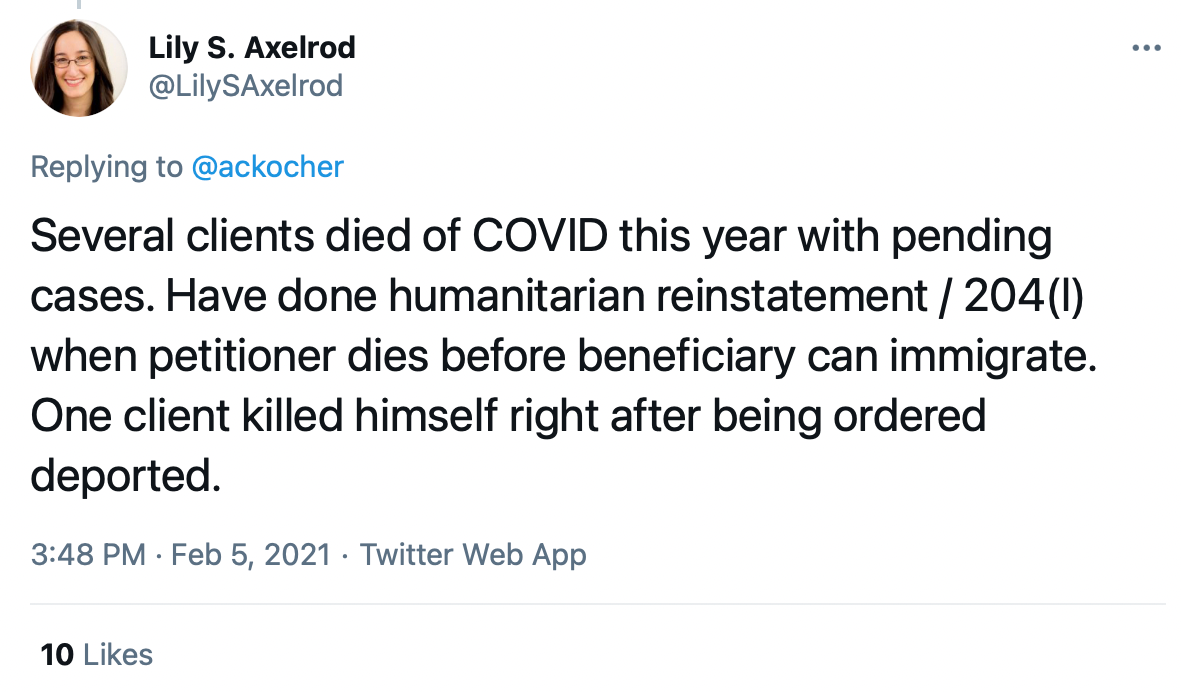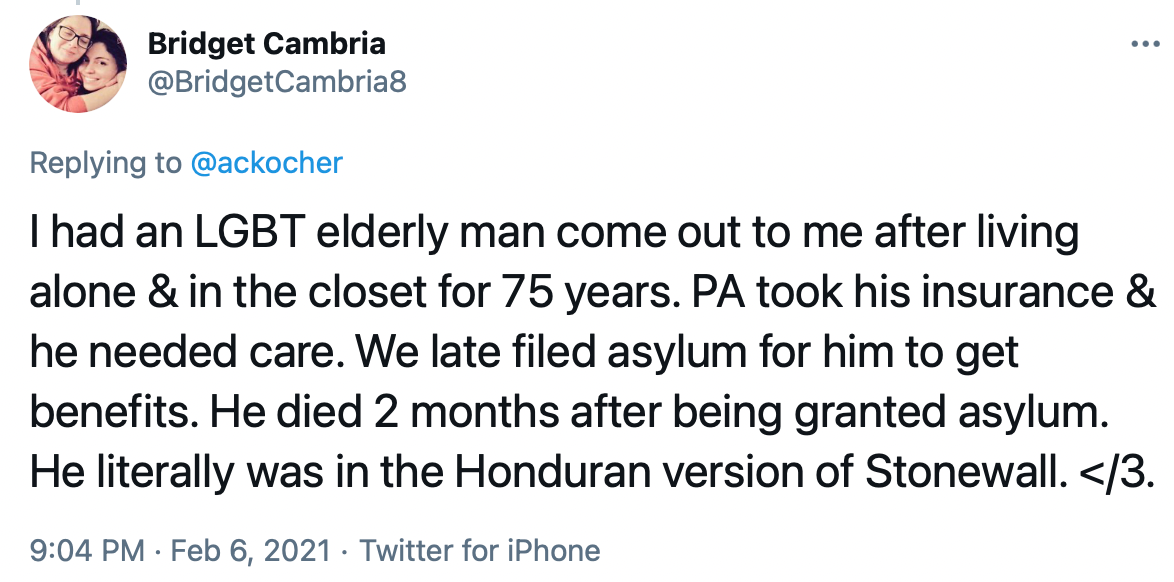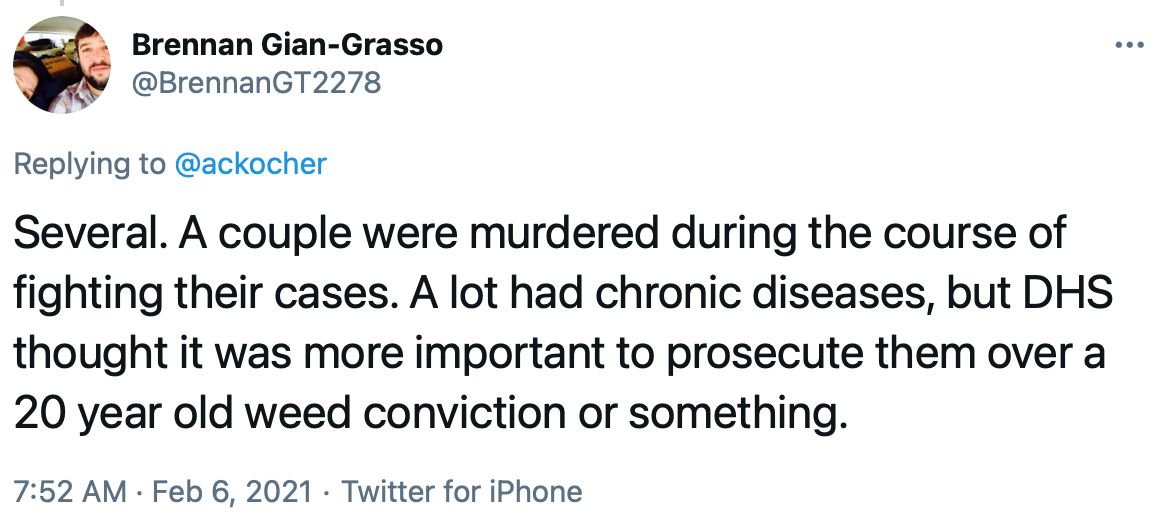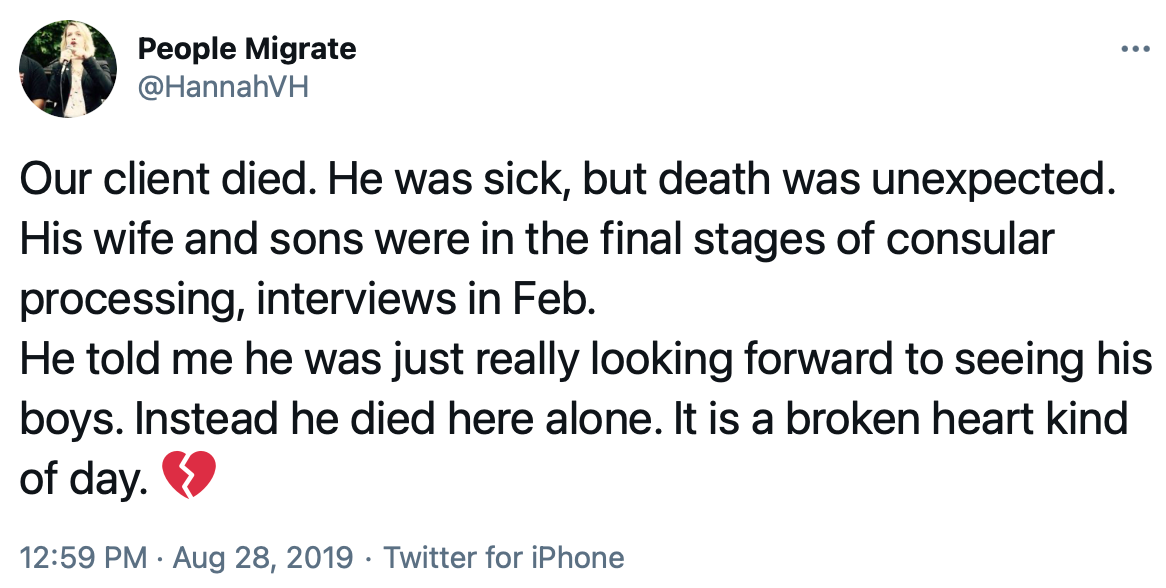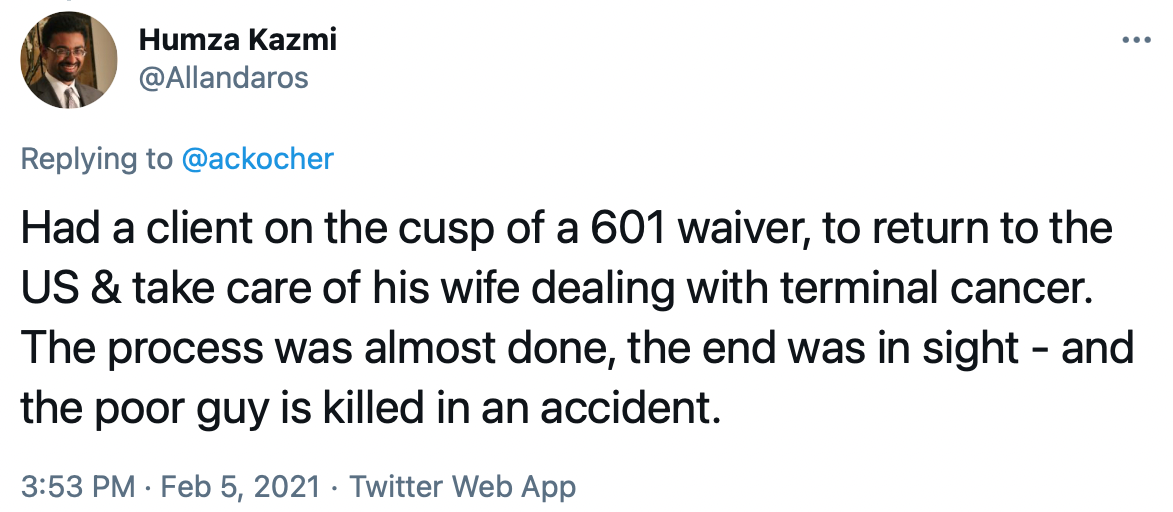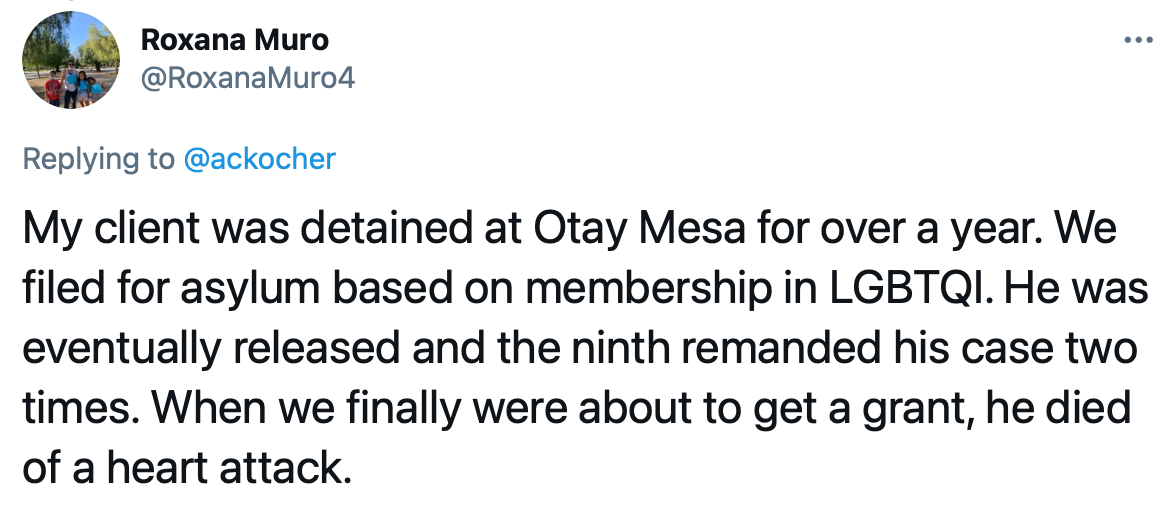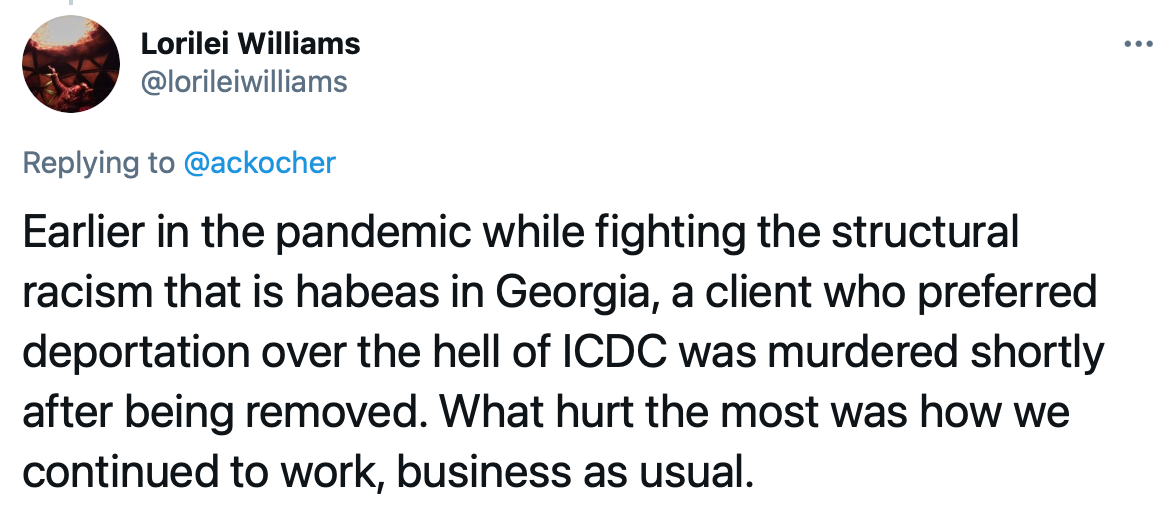How Our Immigration System Treats Migrants’ Lives as Expendable
February 7, 2021
Depending on who you are, your emotional response to talking about death and the migration system ranges somewhere between uncomfortable to re-traumatizing. If you belong somewhere on the “uncomfortable” side of the spectrum, I believe we have a responsibility to make ourselves uncomfortable by actively analyzing and engaging with the ways in which our lives are ethically bound up with the suffering of others. If you belong somewhere closer to the “re-traumatizing” end of the spectrum, this may not be the post for you.
The idea of expendability is captured in one of the French philosopher Michel Foucault’s most influential concepts: “biopolitics.” At its most basic, Foucault describes biopolitics as the way in which life, mainly social life in the aggregate, has become a domain of the exercise of political power in the modern era. Think about the ways in which life-giving forms of welfare, medical care, housing, and exposure to environmental poisons are fought over as political issues.
More importantly, I think by now it is (relatively) common knowledge that race plays a powerful, sometimes determinate, role in shaping who is exposed to air pollution and able access to mental health care. Study after study shows that people of color live, on average, several years fewer than their white counterparts. These outcomes can be understood as biopolitical. And one distinguishing feature of biopolitics is that it’s not like the state is directly and intentionally targeting individuals to die. Rather, all the state has to do is simply to withdraw life-giving types of support. As Foucault said, the state “makes live” (i.e. actively provides support to some) while “letting die” (i.e. simply withdrawing support or doing nothing to help).
Immigration systems can be understood as perhaps one of the most lucid yet constantly-evolving examples of biopolitics at work. To illustrate this point, this post has two parts. First, a short section on migrant deaths at the physical borders of the US and the EU, with examples of how state agencies are complicit in allowing migrants to die. Second, another short section on how migrants are exposed to death while waiting for paperwork to go through while living in the United States. The sections contrast with each other in some ways, but they are also related as versions of answers to the question of how lives are valued and devalued—even rendered “expendable”—through the immigration system.
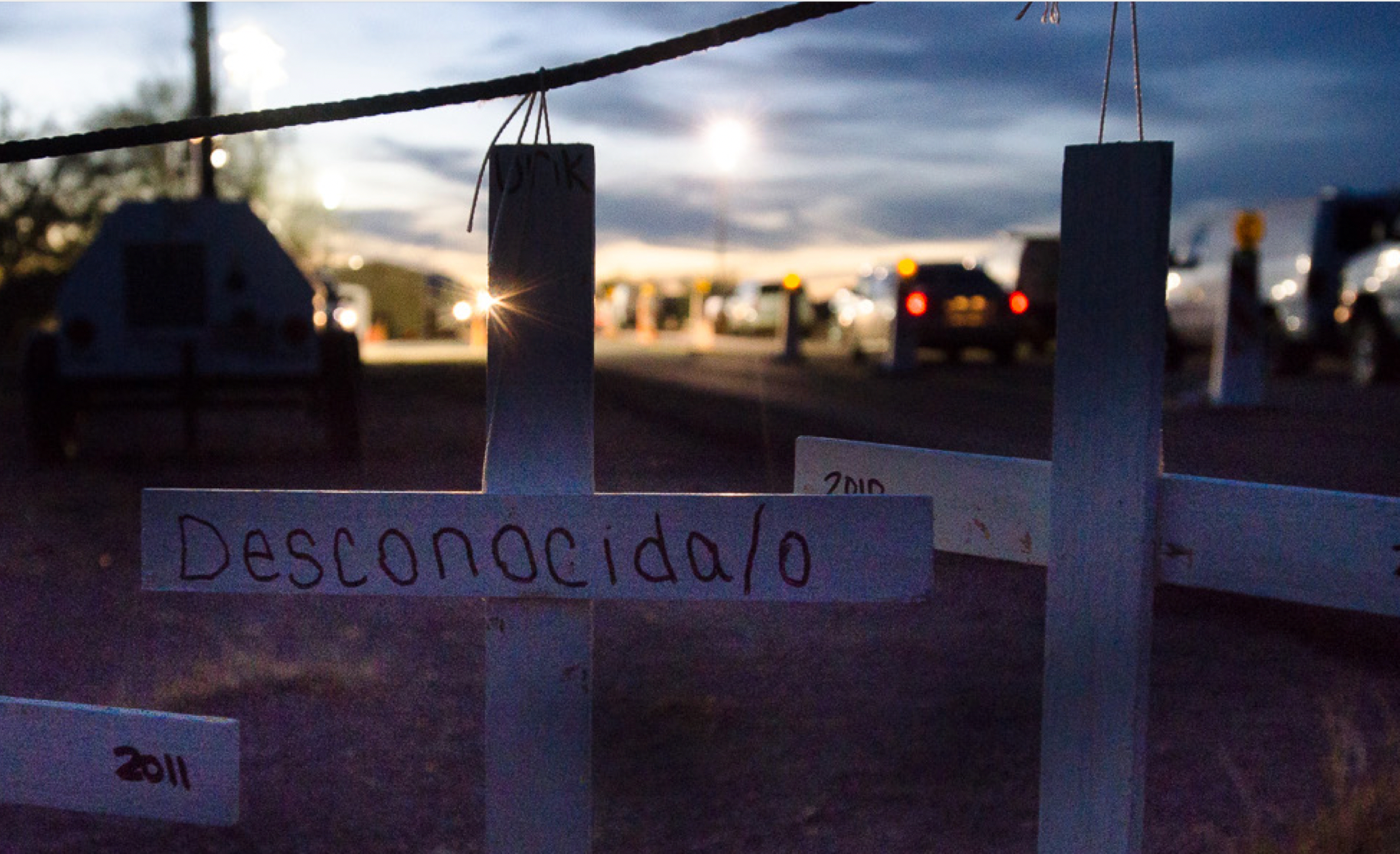
Migrants are Left to Die at the Borders of the US and the EU
For most of us, from the time we are children, we learn that in an emergency we should call 911. Heart attack in the airport? Call 911. Someone broke into your car in Las Vegas? Call 911. Break your arm while hiking in Maine? If you can get reception, you know what you’d do. Call 911.
But according to a new report from No More Deaths released yesterday, 911 doesn’t work if you’re a migrant. “Left to Die: Border Patrol, Search and Rescue, and the Crisis of Disappearance” shows how 911 calls placed from migrants in the desert get transferred away from local emergency response organizations and sent instead to Border Patrol. Border Patrol, a troubled agency that is often described as “rogue,” frequently leaves those migrants to die.
Based on a close study of 911 calls transferred to Border Patrol in 2015 and 2016, No More Deaths found that in 40% of those cases, Border Patrol does absolutely nothing, leaving these migrants to die in the desert. The New York Times created a visualizationof a similar study of 911 calls in Arizona.
This ‘left to die’ language is not new. In fact, hundreds and even thousands of refugees seeking safety in Europe are also left to die in the Mediterranean Sea each year. The Missing Migrants project documents migrants lost or reported dead. Refugee boats often send distress signals but are ignored. For instance, a research team at Forensic Architectures reconstructed just one example of this in 2011 in a project called “The Left to Die Boat.” That video, which I show in every class I teach, demonstrates how dozens of refugees were left floating in the sea despite calls for help, leading to the death of most of the passengers.
This all reinforces the point that borders are a life-and-death technology of sovereign power. In his book Violent Borders, geographer Reece Jones argues that borders are a powerful tool of sovereign control, where migrants are exposed to increased “chances of injury, death, or deprivation.” Migrants should not die simply because they are migrants.
Dying in the Waiting Room of America’s Immigration System
Dying at physical borders is not the only way that death and the immigration system are intertwined. Many immigrants also die while waiting for paperwork to go through inside the United States, either while waiting to hear if they will get lawful status or while they are waiting to become a full-fledged citizen.
After reading the No More Deaths report I mentioned above, I decided that I wanted to ask more about the everyday examples of immigrants “dying in waiting.” That is, dying in America’s immigration waiting room, whether that’s waiting for an asylum hearing, waiting for a citizenship application, or waiting in one’s home country for a visa application to wind its way through the system.
So I did what I often do in these situations: I reached out online. I asked immigration attorneys if they had clients pass away while waiting for paperwork. I wasn’t sure anyone would respond. It’s a dark topic and didn’t know if people would talk about it. I also wasn’t sure how many people had actually lost a client. But as it turns out, losing a client somewhere in the middle of the immigration process was even more common than I imagined. Many people also responded with stories of clients who were killed after being deported.
I’ve archived some of the responses below. Some people simply raised their hand, while others provided more heartbreaking detail. I believe that as hard as it is to talk about this, there simply isn’t enough good reporting or research on the enormous price that immigrants pay while in the immigration system, nor how much secondary trauma there is for family members and allies who experience this far too often.
The Twitter post associated with this study (previously here)has been deleted, but the response have not.
Screenshots of select responses are available below.

